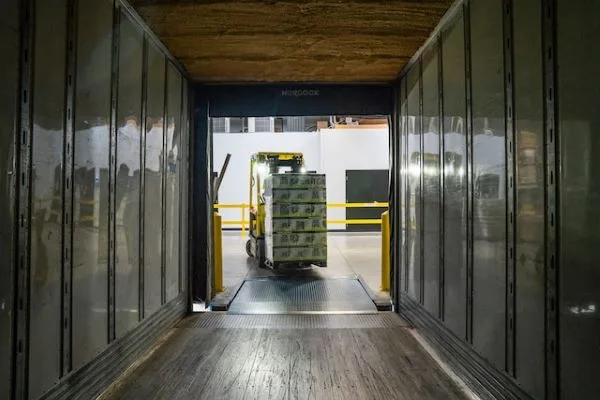7 Ways How Tracking Systems Has Changed the Business Operations

The rapidly expanding demand for online commerce has resulted in company models with faster order fulfillment periods, increased competition, lower profitability, and an emphasis on outstanding customer service,
As a result, examining a company’s logistics processes and optimizing them with the right tools and suggestions has become critical for success. Because logistics is at the heart of supply-chain management, it has resulted in significant advances in overall procedures and operational efficiency reached by supply chains worldwide.
Companies can streamline operations by deploying a customizable asset monitoring system, ensuring assets maintain value, improving customer experiences, and making educated business choices.
See how tracking systems are changing the face of business.
-
Improved Inventory Control and Stock Visibility
The most essential resource for every company is its inventory. The secret to boosting sales and profitability lies in it. Tracking systems use barcodes or RFID tags to track inventory. As items leave warehouses or get loaded onto vehicles, they are scanned, and their location is automatically updated.
As of 2015, over half of the manufacturers used RFID chips for inventory tracking. Without question, that figure has risen in recent years. This is an excellent summary of how tracking technology may help improve your business.
Logistics tracking enables the adoption of automatic replenishment methods to guarantee that items are always accessible without the need for user intervention. It also ensures that items are delivered to clients on schedule and in good shape. If a product is out of stock, it can reduce consumer satisfaction and sales while increasing expenses due to delivery delays.
-
Managing Logistics and Warehouses Operations Efficiently
Consumer wants and expectations are constantly changing and evolving rapidly. To always be ahead of the competition, businesses must continually grab opportunities and solve problems as soon as they arise.
Tracking solutions enable businesses to reduce shipping times, grow with demand, and transact smoothly with overseas suppliers, giving you real-time information and control to make the best business decisions.
Using tracker systems for vehicles, third-party logistics, and warehouse management setup aids in successfully administrating and tracking stock, orders, and deliveries. With a tracking system, all team members have access to the same information and can work together seamlessly, which increases the accuracy and efficiency of these operations, including inventory tracking, order fulfillment, and shipping.
Tracking systems also provide real-time inventory data, sales data, and customer demand, allowing managers to make informed decisions about restocking, arranging additional shipments, optimizing warehouse space, and forecasting and planning.
-
Smooth Scheduling and Maintenance Of The Transportation System
Cloud tracking solution combines inventory, cars, and location-based data into one database your firm’s employees can see. With tracking, you can always be aware of the whereabouts of any vehicle in your fleet. You’ll also get a live view of driver schedules and freight operations, letting you know when drivers will be out of service or if the vehicle requires repair.
You can reduce the number of vehicles needed to deliver freight using a trustworthy and secure tracking system. You can verify that your trucks function at peak efficiency, reducing trips back to the warehouse to repair defects or malfunctions.
-
Real-Time Business Analytics and Precise Distribution Management
Tracking systems give you a thorough insight into your company. Better distribution management is a significant advantage. The integrated view offers a far more lucid image of the complete supply chain, from the raw material source to where the finished product is stored.
Managers in the logistics industry may operate more efficiently and enhance their capacity to meet client demand with a well-designed tracking system. According to a recent study, most retail inventory systems are just 63% accurate. This is a low figure for your company’s success since it may harm it.
Using tracking software, you can easily and quickly produce reports on sales, shipments, inventory, and other topics. These reports may also be exported in various forms so that other divisions of your business, like finance or marketing, can use them.
-
Real-Time Order Management and Shipment Tracking
Tracking systems can monitor shipments in real-time by connecting with all relevant parties engaged in the shipping process, including consumers, suppliers, carriers, and even third-party logistics partners. One-third of firms will miss a shipment date because they sold an item not in stock.
However, with efficient tracking, you can monitor the whereabouts of items at any given time, their destination, and any incidents that may have occurred to them along the way. Also, the system notifies you if anything was lost or damaged during shipment. Employees can also better manage their workload since they can always track where things are and notify others when deliveries or pickups from warehouses or storage facilities are required.
They can handle orders, inventory, and shipments all in one location using an integrated system, which also helps to cut down on mistakes and boost productivity. The information on these systems can also be utilized to detect counterfeit items or fraudulent activities.
-
Efficient Workforce Management and Remote Location Access
One advantage of tracking software is remote access to your company. For instance, if you oversee a logistics business, you may supervise its operations and procedures using a TRACKING system from anywhere in the world.
If you oversee a field team, remote access to the system will let you monitor their activities, offer them any necessary direction, and manage inventory, sales, and client connections without being physically present. Employee involvement and retention are critical to any company’s success in human resource management, and tracking systems may be crucial in assisting you in engaging your staff.
Companies that have remote sites must have remote access to their enterprises. With a tracking system, you can view your data anytime and from anywhere, removing the requirement for physical presence at the office. You can handle orders, inventory, and shipments all in one location with an integrated system, reducing mistakes and increasing efficiency.
-
Safe Access to Your Vendor Portal
Logistics is a complicated process that requires collaboration from numerous stakeholders to guarantee compliance with legislation and industry standards. Formerly, this involved dealing with several vendors and negotiating contracts individually.
Nowadays, most businesses utilize modern tracking systems to interact with their suppliers through a single point of contact. This lets you handle all of your suppliers and distribution network through one interface, simplifies negotiations, and avoids errors caused by misunderstandings.
With a tracking system, you may leverage real-time data from your warehouse management system to manage inbound freight better. Suppose a supplier meets delivery deadlines but doesn’t have adequate inventory to fulfill a request immediately. Before anything else happens, you may simply put up a notification to inform you of the issue.
Conclusion
Effective tracking and inventory management assist a firm in meeting the majority of its operational goals and increasing revenues. Companies must embrace advanced methods to improve corporate governance as technology advances.





